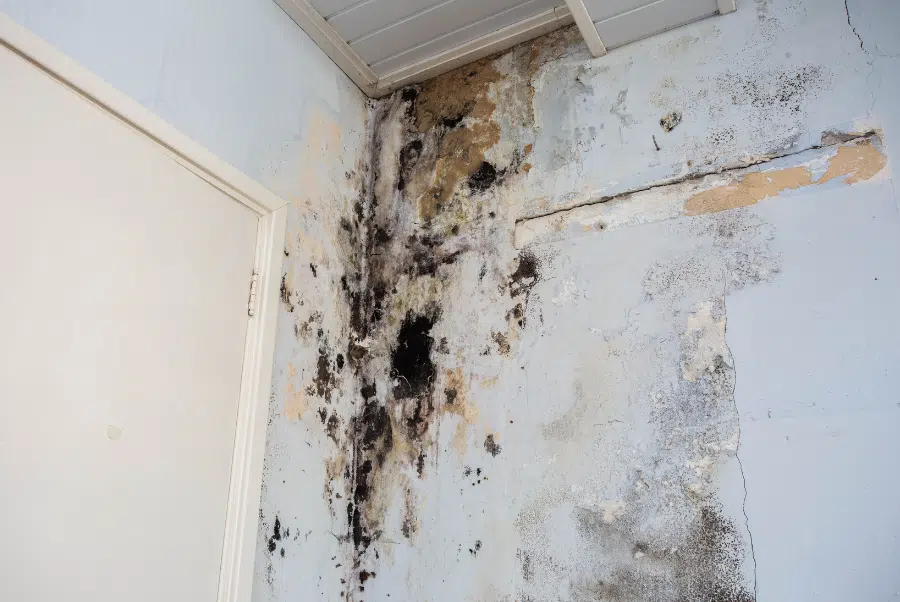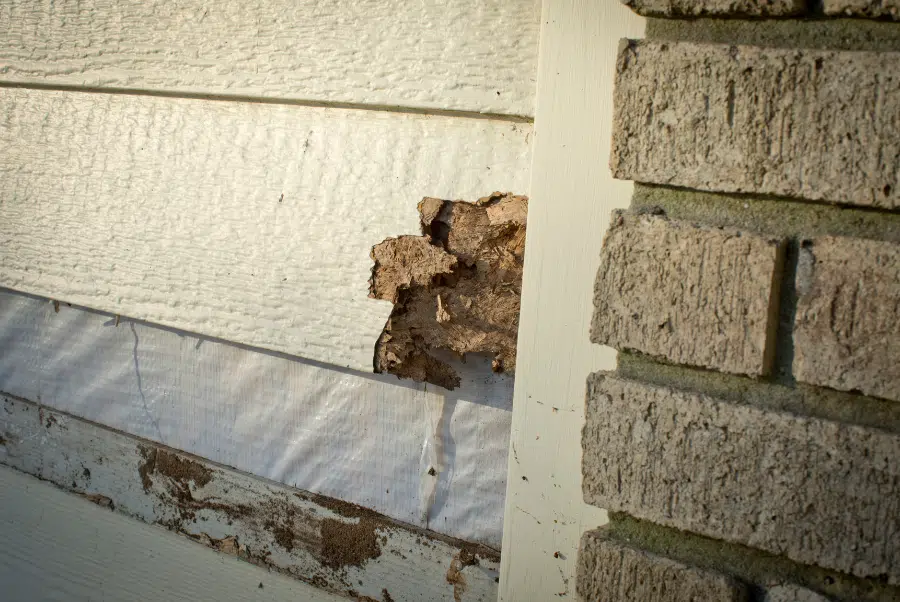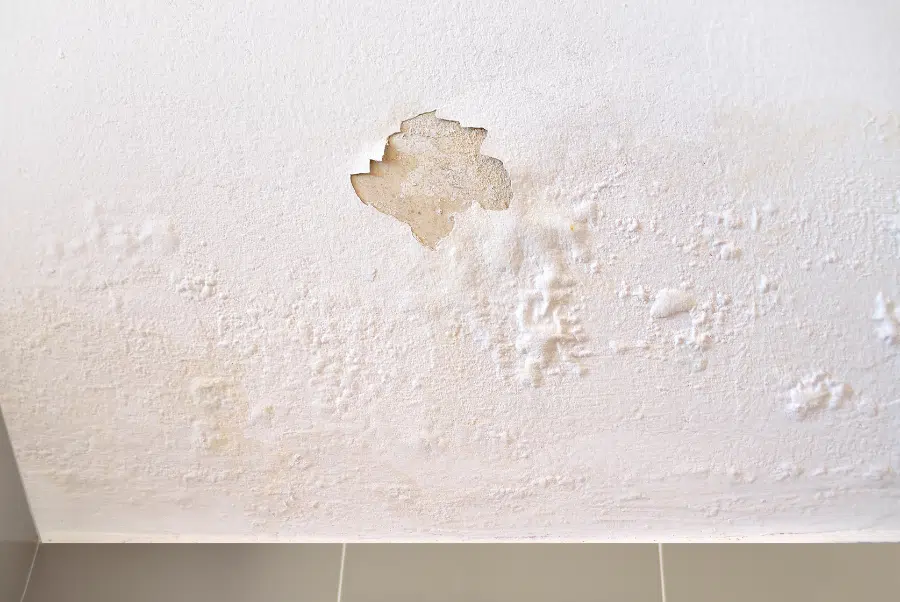Maintaining your home’s exterior is crucial, and one of the most important aspects is to replace your home siding when necessary. Not only does siding enhance your home’s aesthetic appeal, but it also serves as a critical barrier against the elements. Over time, however, siding can deteriorate, crack, or warp, leading to problems that may result in expensive repairs. In this post, we will discuss five critical reasons why you should replace your home siding to prevent costly damage.
By the end of this article, you’ll understand why replacing your home siding is essential for the long-term health, value, and beauty of your home.
1. Protect Your Home from Water Damage

One of the most essential functions of siding is to protect your home from moisture. Siding acts as a barrier, preventing rain, snow, and humidity from seeping into your home’s walls and causing structural damage. When your siding is compromised—either through cracks, gaps, or general wear and tear—it can no longer effectively block moisture. This can lead to a series of issues, many of which could be extremely costly to repair.
How Water Damage Impacts Your Home
Water damage doesn’t just happen overnight; it often occurs gradually, silently wreaking havoc behind your walls before you even notice there’s an issue. Here’s how water damage can affect your home:
- Rotting wood: Prolonged exposure to moisture can cause the wooden framework of your home to rot, weakening its structural integrity.
- Mold and mildew growth: Moisture behind the walls creates a damp environment, perfect for the growth of mold and mildew. These fungi aren’t just unsightly—they can also pose significant health risks.
- Foundation issues: Over time, water can seep down into your foundation, causing cracks and undermining the stability of your home.
Signs of Water Damage in Siding
It’s important to regularly inspect your home’s siding for signs of water damage. Look for the following warning signs:
- Cracked or warped siding: These can indicate that water has penetrated behind the siding and is causing internal damage.
- Peeling paint inside the home: If you notice paint bubbling or peeling on your interior walls, it may be a sign that moisture has seeped in through the siding.
- Mold or mildew on exterior walls: The presence of mold or mildew around your siding could signal a moisture problem.
Replacing your home siding is one of the most effective ways to prevent water from damaging your home. With new, durable materials such as fiber cement or insulated vinyl siding, you can create a stronger barrier against moisture and protect the structural integrity of your home for years to come.
2. Improve Energy Efficiency and Reduce Utility Bills
In addition to protecting your home from external damage, your siding also plays a crucial role in insulating your home. Old or damaged siding can allow air leaks, leading to drafts, temperature fluctuations, and overall poor energy efficiency. If your heating and cooling costs have been creeping up despite maintaining your HVAC system, your siding may be to blame.
How Siding Impacts Energy Efficiency
Modern siding materials are often designed with energy efficiency in mind. For example, insulated vinyl siding has a foam backing that increases the R-value (thermal resistance) of your walls. This extra layer of insulation helps keep your home warm in the winter and cool in the summer, reducing the strain on your HVAC system and lowering your energy bills.
Here are a few ways new siding can help improve your home’s energy efficiency:
- Reduce air leaks: Properly installed siding creates a tighter seal around your home, minimizing drafts and air leaks that can lead to energy loss.
- Better insulation: Materials like insulated vinyl or fiber cement siding offer superior insulation properties compared to older siding types, helping to maintain a consistent indoor temperature.
- Reflective surfaces: Some siding materials come with reflective coatings that deflect sunlight and prevent your home from absorbing excess heat during the summer.
Energy Savings Statistics
Did you know that upgrading to energy-efficient siding can reduce your home’s heating and cooling costs by as much as 15%? According to the U.S. Department of Energy, properly insulated homes can significantly reduce their energy consumption, leading to both environmental and financial benefits.
Signs Your Siding Is Impacting Energy Efficiency
If you’re unsure whether your siding is affecting your home’s energy efficiency, look for these common signs:
- Increased utility bills: A sudden spike in energy costs could mean that your siding is no longer providing proper insulation.
- Drafts near walls: If you feel drafts near the perimeter of your home, damaged siding may be the culprit.
- Inconsistent indoor temperatures: Hot and cold spots in your home could indicate that outside air is seeping in through the walls.
By replacing your home siding with an energy-efficient material, you can reduce utility costs, enjoy a more comfortable indoor environment, and do your part to lower your home’s carbon footprint.
3. Boost Curb Appeal and Increase Property Value
Your home’s exterior is the first thing people notice, and your siding plays a significant role in making a good first impression. Whether you’re planning to sell your home or just want to maintain its appearance, replacing your home siding can have a transformative effect on its curb appeal. Old, faded, or damaged siding not only detracts from your home’s visual appeal but also signals potential structural issues to prospective buyers.
The Impact of Siding on Curb Appeal
Siding covers a large portion of your home’s exterior, and as such, its condition and appearance can make or break the aesthetic of your property. Faded or outdated siding can make even the most beautiful landscaping or architecture look dull. On the other hand, new siding can breathe new life into your home, giving it a fresh, modern look that stands out in the neighborhood.
Here are a few ways replacing your home siding can boost its curb appeal:
- Modernize your home’s look: New siding materials, such as fiber cement or engineered wood, come in a variety of colors and textures that can give your home a contemporary or classic appearance, depending on your style preference.
- Enhance architectural features: Updated siding can accentuate your home’s architectural details, such as trim, windows, and doors. You can also mix different siding materials (e.g., stone veneer with vinyl) to create a unique, upscale appearance.
- Increase color options: New siding materials come in a wide range of colors that resist fading, allowing you to choose a vibrant color scheme that will maintain its beauty for years.
ROI from Siding Replacement
Replacing your home siding is not just an aesthetic upgrade—it’s an investment that can yield significant returns. In fact, according to Remodeling Magazine’s Cost vs. Value Report, homeowners can expect to recoup around 75-80% of their siding replacement costs when they sell their home. This makes siding replacement one of the highest-ROI home improvement projects you can undertake.
Moreover, homes with new siding are more likely to attract buyers. Real estate agents often highlight the condition of a home’s exterior in listings, and a home with freshly replaced siding signals that the property has been well-maintained. It also gives buyers peace of mind, knowing they won’t need to invest in exterior repairs after moving in.
Case Study: How Siding Replacement Increased Home Value
Consider this example: A homeowner in a suburban neighborhood replaced their aging vinyl siding with James Hardie fiber cement siding. Not only did the new siding significantly enhance the appearance of their home, but it also increased its appraised value by $15,000. When the home was listed for sale, it attracted multiple offers, and the owners were able to sell it at a 10% higher price than comparable homes in the area.
Signs Your Siding Is Hurting Your Home’s Value
If you’re wondering whether your siding is negatively affecting your home’s curb appeal and value, here are some common signs to look for:
- Faded or outdated color: If your siding looks dull or faded, it’s likely past its prime and detracting from your home’s appearance.
- Visible cracks or warping: Damaged siding not only looks unsightly but also raises concerns about potential moisture or structural issues.
- Inconsistent materials or patches: If your home’s siding has been repaired in sections using different materials or colors, it can create a disjointed, unappealing look.
Replacing your home siding can dramatically enhance its curb appeal and make it more attractive to buyers, all while protecting its structure and improving energy efficiency.
4. Replace Your Home Siding to Prevent Pest Infestation

While most homeowners focus on the aesthetic and structural benefits of siding, one often overlooked advantage of replacing your home siding is the prevention of pest infestations. Damaged or deteriorating siding creates vulnerabilities that pests, such as termites, carpenter ants, and rodents, can exploit to enter your home. Once inside, these pests can cause extensive damage that is often expensive to repair.
How Pests Use Damaged Siding to Enter Your Home
Over time, siding can develop cracks, gaps, or holes due to exposure to harsh weather conditions or general wear and tear. These imperfections might seem minor at first, but they provide easy entry points for pests. Here’s how different types of pests can infiltrate your home through compromised siding:
- Termites: These destructive insects can access your home through small cracks in wooden siding or even through unsealed gaps around the edges. Once inside, termites can feast on wooden structures, leading to costly damage.
- Carpenter ants: Like termites, carpenter ants are attracted to wood and will burrow into rotting or damp areas behind siding. They hollow out wood to create nests, weakening the structural integrity of your home.
- Rodents: Mice and rats can squeeze through surprisingly small holes. Cracked or loose siding offers easy entry, and once inside, rodents can chew on electrical wiring and insulation, causing even more damage.
- Bees and wasps: Gaps in siding are also inviting to bees and wasps looking for a place to nest. These pests can be a nuisance and pose a danger, especially to those with allergies.
By replacing your home siding with newer, more durable materials, you can create a tight, secure barrier that keeps pests out and prevents them from wreaking havoc inside your home.
Signs of Pest Infestation Due to Damaged Siding
If your home’s siding is old or damaged, it’s important to regularly inspect for signs of pest activity. Here are some common indicators that pests may have entered through compromised siding:
- Wood shavings or frass: This is a telltale sign of termite or carpenter ant activity. You may find small piles of wood shavings near the foundation or base of your siding.
- Hollow-sounding wood: Tap on areas of your home’s exterior. If the wood sounds hollow, it could be a sign that termites or carpenter ants have been tunneling inside.
- Gnaw marks or chewed edges: Rodents often chew on siding materials, especially around gaps or openings. Look for gnaw marks or areas where siding appears worn.
- Mud tubes: Termites often build small mud tubes along the foundation of a home to travel between their nest and their food source. These tubes are a strong indicator of termite activity.
Benefits of Pest-Resistant Siding Materials
When replacing your siding, it’s a good idea to choose materials that are resistant to pests. Modern siding options such as fiber cement or vinyl siding are designed to be pest-resistant and durable, offering better protection than traditional wood siding. Here’s why these materials are superior:
- Fiber cement siding: Made from a blend of cement, sand, and cellulose fibers, this siding is incredibly tough and resistant to insects, especially termites and carpenter ants. It doesn’t contain the cellulose that attracts wood-eating pests, making it an excellent barrier.
- Vinyl siding: While not as strong as fiber cement, vinyl siding is still a great option for pest prevention because it doesn’t provide a food source for termites or ants. It’s also easier to install without gaps, ensuring a tight seal around your home.
- Engineered wood siding: Unlike traditional wood, engineered wood siding is treated to resist pests. It offers the look of natural wood without the vulnerability to insect infestations.
Long-Term Savings from Pest Prevention
The costs of repairing pest damage can quickly add up. For example, termites alone cause over $5 billion in damage annually in the U.S., according to the National Pest Management Association. By investing in replacing your home siding, you can avoid the headache and expense of dealing with pests down the road. It’s a proactive solution that not only protects your home from infestations but also saves you money on costly repairs.
5. Prevent Costly Structural Damage to Your Home
Replacing your home siding is essential to protecting its structural integrity. Damaged or worn siding can lead to serious issues, including moisture infiltration, wood rot, and foundation problems, all of which can result in costly repairs.
How Damaged Siding Leads to Structural Problems
When siding is cracked, warped, or improperly sealed, it exposes your home to moisture, pests, and the elements. Over time, this can cause:
- Moisture infiltration: Water can seep into walls, leading to rotting wooden beams, sagging walls, and roof damage.
- Foundation issues: Water from damaged siding can erode the foundation, causing cracks and shifts that threaten your home’s stability.
- Weakened insulation and framing: Water and pests can destroy insulation and wooden framing, leading to higher energy bills and weakened walls.
Signs of Structural Damage from Faulty Siding
Watch for these warning signs of deeper structural issues:
- Sagging or uneven walls: Indicates possible rot in the framework behind the siding.
- Cracked or crumbling foundation: Signals moisture infiltration from faulty siding.
- Peeling or warped interior walls: Water damage behind siding can cause paint to peel and drywall to warp.
Costs of Structural Damage vs. Siding Replacement
Replacing siding early costs $5,000 to $15,000, much less than structural repairs like:
- Foundation repairs: $2,000 to $25,000
- Wood rot repair: $7,000 to $15,000
- Roof repair: $1,500 to $5,000
Durable Siding Options for Structural Protection
Consider these materials to prevent damage:
- Fiber cement siding: Resistant to moisture, pests, and fire, offering strong protection.
- Engineered wood siding: Provides the look of wood with better resistance to moisture and pests.
- Insulated vinyl siding: Enhances energy efficiency and protects against moisture and temperature changes.
By choosing durable materials and replacing your home siding before significant damage occurs, you can protect your home’s structure and avoid costly repairs.
Signs That It’s Time to Replace Your Home’s Siding
Regularly inspecting your home’s siding is crucial to prevent costly repairs. Here are key signs that it’s time to replace your home’s siding:
1. Cracked, Warped, or Rotted Siding
Visible damage, such as cracks, warping, or rotting, indicates your siding is no longer protecting your home. Weather exposure weakens materials, leading to moisture infiltration and structural damage.
How to Identify:
- Look for visible cracks, warped panels, or rotting areas.
- Tap on the siding—if it feels soft or crumbly, it’s likely rotted.
2. Fading or Peeling Paint

Fading or peeling paint often signals that your siding is aging and no longer offering adequate protection from the elements.
How to Identify:
- Look for flaking or peeling paint.
- Uneven fading may indicate UV damage.
3. Increased Energy Bills
Damaged siding can result in poor insulation, causing higher energy bills as your HVAC system works harder.
How to Identify:
- Compare current energy bills to past years.
- Check for drafts near walls and windows.
4. Mold, Mildew, or Fungus Growth
Mold or mildew growth on siding suggests moisture is trapped, which can lead to structural damage and health issues.
How to Identify:
- Look for green, black, or white patches.
- Check seams and edges where moisture may be trapped.
5. Bubbling or Blistering Siding
Bubbling or blistering indicates water is trapped beneath the siding, weakening its protective qualities.
How to Identify:
- Run your hand over the siding to feel for raised areas.
- Inspect for additional damage like peeling or cracking.
6. Storm Damage
Strong winds and hail can leave siding cracked, dented, or torn off, even if the damage seems minor.
How to Identify:
- Check for dents, cracks, or loose panels after storms, especially around windows and corners.
7. High Maintenance Requirements
If your siding needs frequent painting, caulking, or repairs, it’s likely time for a replacement.
How to Identify:
- Track how often you need repairs. Frequent maintenance suggests the siding is near the end of its lifespan.
By recognizing these signs early, you can replace your home’s siding before minor issues escalate into costly damage.
Conclusion
Replacing your home siding is more than a cosmetic upgrade—it’s crucial for protecting your home from damage. Benefits include improved energy efficiency, moisture prevention, enhanced curb appeal, and increased property value. By addressing signs like cracks, warping, mold, or rising energy bills early, you can avoid costly structural damage.
Investing in quality materials like fiber cement or insulated vinyl offers long-lasting protection and reduces maintenance. Whether staying long-term or selling, new siding is a smart way to safeguard your home and boost its value.
Don’t wait for major damage—if you see any warning signs, consider replacing your siding to protect your home and enjoy peace of mind.





